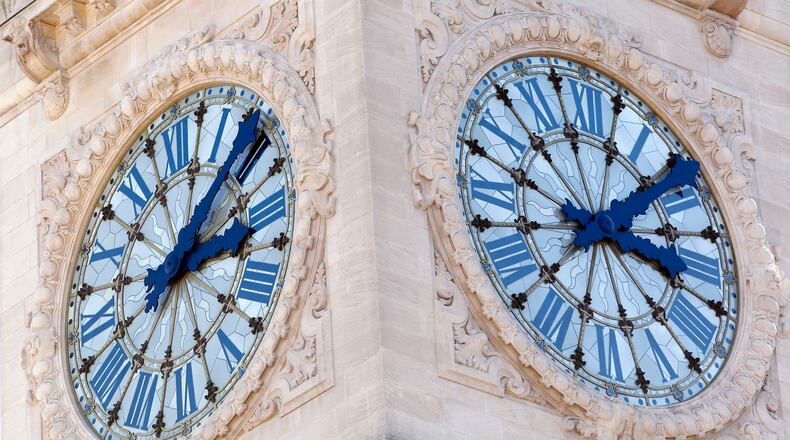People hoping for a speedy end to 2016 are going to have to wait a second – literally.
Clocks worldwide will pause for a "leap second" on Saturday. At 11:59 p.m. and 59 seconds Coordinated Universal Time (6:59 p.m. EST), international timekeepers will insert an additional second, marking the time as 11:59 p.m. and 60 seconds before midnight on New Year's Day.
Here are some things to know about the time change:
1. The time will automatically update on devices that adjust time automatically, such as cell phones and other electronics. The federal government also accounts for leap seconds in its GPS navigation messages, according to the Department of Homeland Security.
There's no need to worry about clocks that get manually adjusted either -- the time change is so small, it's likely to go unnoticed.
2. The extra second is necessary to keep time in sync with the Earth's rotation. Official international time, UTC, is based on both precise atomic clocks, which provide timekeepers with the "ticking rate," and astronomical time, based on the position of the sun and stars, according to the National Institute of Standards and Technology.
"Atomic clocks are more than a million times better at keeping time than the rotation of the Earth, which fluctuates unpredictably," said Peter Whibberley, a senior research scientist at the UK's National Physical Laboratory. "Leap seconds are needed to prevent civil time drifting away from Earth time. Although the drift is small – taking around a thousand years to accumulate a one-hour difference – if not corrected, it would eventually result in clocks showing midday before sunrise."
3. Leap seconds are not uncommon. Saturday's extra second will be the 27th leap second added to the clock since timekeepers introduced the measure in 1972, according to the National Institute of Standards and Technology.
The last leap second occurred on June 30, 2015.
4. The need for leap seconds is unpredictable. The organization tasked with maintaining global time, the Paris-based International Earth Rotation and Reference Systems Service, announced this year's leap second over the summer in one of its bi-annual bulletins.
Timekeepers are only able to tell with a few months notice whether a leap second will be necessary because of the unpredictable nature of the Earth's rotation speeds.
"The only thing we do know is that the rotation rate will slow down over the long term because of gravitational forced from the moon and sun," the NIST said in a news release.
5. The time addition is not without its critics owing to the fact that leap seconds can cause major problems. A leap second added to the end of the year in 2012 caused a software glitch that interrupted internet services for a few hours, according to NIST.
Other critics believe people would be better served by sticking to the regularity of atomic time, according to NPR.
Last year, the United Nations announced it would delay its decision on whether to do away with the leap second until 2023, NPR reported. The organization said that "further studies are required on the impact and application of a future reference time-scale," before the decision can be made.
About the Author
The Latest
Featured


